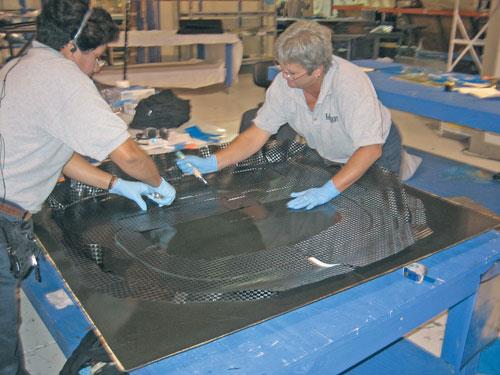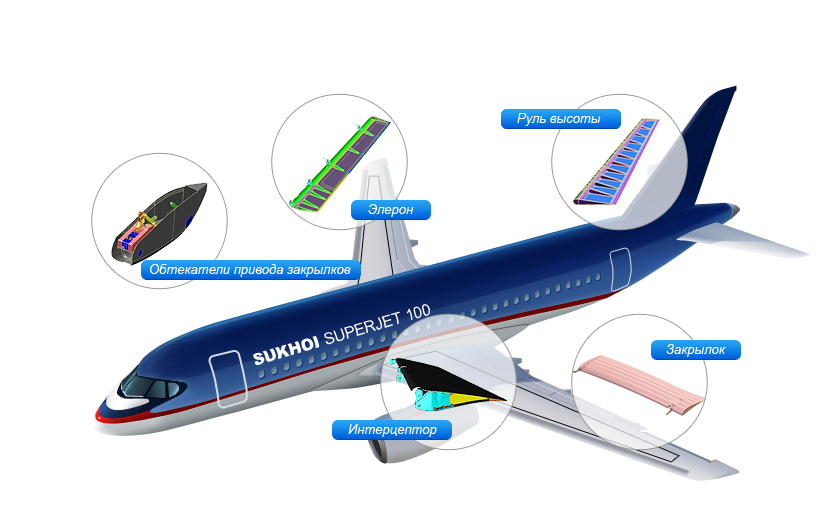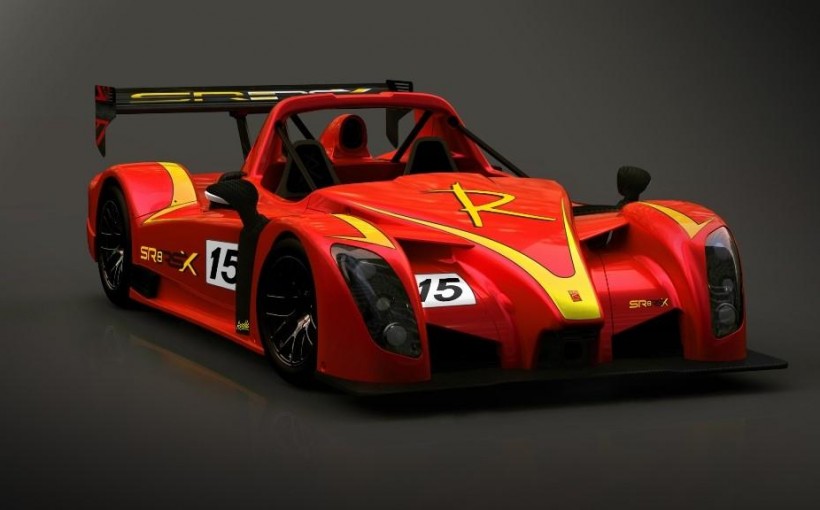Some methods of manufacturing products from composites
My last post I dedicated to the history of composite materials. I continue to occupy my leisure time with this topic and today I want to talk a little about terms and technologies of prototyping using polymer composites. If you have nothing to do in the long winter evenings, then you can always make a snowboard, a body for a motorcycle or a cover on a smartphone from carbon fiber fabric. Of course, the process may end up more expensive than buying a finished product, but it’s interesting to do something with your own hands.
Under the cut - an overview of the methods of manufacturing products made of composite materials. I would be grateful if you add me in the comments so that the result will be a more complete post.

')
Composite material is created from at least two components with a clear boundary between them. There are laminated composite materials - for example, plywood. In all other composites, components can be divided into a matrix, or a binder, and reinforcing elements - fillers. Composites are usually divided according to the type of reinforcing filler or the matrix material. You can read more about the use of composites in the post History of Composite Materials , and this publication is devoted to methods of making products from composites.
In the case of single-piece manufacturing, the most common method is manual molding. A gelcoat is applied to the prepared matrix - a material for obtaining a good finish on the outer part of the reinforced material, which also makes it possible to select a color for the product. Then the filler is placed in the matrix - for example, fiberglass - and soaked with a binder. We remove air bubbles, wait until everything cools down, and modify it with a file - cut, drill and so on.
This method is widely used to create body parts for cars, motorcycles and mopeds. That is, for tuning in those cases where it is not limited to sticking carbon film.


Spraying does not require cutting glass material, but instead you need to use special equipment. This method is often used to work with large objects, such as boat hulls, vehicles, and so on. In the same way as in the case of manual molding, the gelcoat is first annihilated, then the glass material.

When the method of injection of polyester resin into a closed form is used, the equipment of the matrix and the response form - a punch. The glass material is placed between the matrix and the response form, and then a hardener, polyester resin, is poured into the mold under pressure. And, of course, the completion of the file after curing - to taste.

The vacuum infusion method requires a bag in which a vacuum is created using a pump. In the package itself there is a reinforcing material, the pores of which, after evacuating the air, are filled with a liquid binder.
An example of a method is for making a skateboard.

The method of winding composites allows you to make ultra-light cylinders for compressed gas, for which use PET-liner, pumped up to 2-5 atmospheres, as well as composite pipes used in the oil industry, chemical industry and utilities. From the name it is easy to understand that fiberglass is wound on a moving or stationary object.
In the video - the process of winding fiberglass on the balloon.

Pultrusion is a “broach”. With this method, a continuous process of pulling the composite material through the pulling machine takes place. The speed of the process is up to 6 meters per minute. The fibers are passed through a polymer bath, where they are impregnated with a binder, after which they pass through a preforming device, obtaining the final shape. Then, in the mold, the material is heated, and at the exit we get the final hardened product.
The process of producing sheet piles using the pultrusion method.

Products from thermoplastics are made in the mold under pressure. To do this, use high-temperature hydraulic presses with a force of from 12 to 100 tons and a maximum temperature of about 650 degrees. For example, plastic buckets are made in this way.
The autoclave is necessary for carrying out processes during heating and under pressure above atmospheric in order to accelerate the reaction and increase the product yield. Composite materials are placed inside the autoclave on special forms.

Composite materials are widely used in the aircraft industry. For example, Solar Impulse is built from them.


Auto industry.

Prostheses and orthoses.

Sport.

If you have any add-ons, be sure to write about them in the comments. Thank.
Under the cut - an overview of the methods of manufacturing products made of composite materials. I would be grateful if you add me in the comments so that the result will be a more complete post.

')
Composite material is created from at least two components with a clear boundary between them. There are laminated composite materials - for example, plywood. In all other composites, components can be divided into a matrix, or a binder, and reinforcing elements - fillers. Composites are usually divided according to the type of reinforcing filler or the matrix material. You can read more about the use of composites in the post History of Composite Materials , and this publication is devoted to methods of making products from composites.
Hand molding
In the case of single-piece manufacturing, the most common method is manual molding. A gelcoat is applied to the prepared matrix - a material for obtaining a good finish on the outer part of the reinforced material, which also makes it possible to select a color for the product. Then the filler is placed in the matrix - for example, fiberglass - and soaked with a binder. We remove air bubbles, wait until everything cools down, and modify it with a file - cut, drill and so on.
This method is widely used to create body parts for cars, motorcycles and mopeds. That is, for tuning in those cases where it is not limited to sticking carbon film.


Dusting
Spraying does not require cutting glass material, but instead you need to use special equipment. This method is often used to work with large objects, such as boat hulls, vehicles, and so on. In the same way as in the case of manual molding, the gelcoat is first annihilated, then the glass material.

RTM (injection)
When the method of injection of polyester resin into a closed form is used, the equipment of the matrix and the response form - a punch. The glass material is placed between the matrix and the response form, and then a hardener, polyester resin, is poured into the mold under pressure. And, of course, the completion of the file after curing - to taste.

Vacuum infusion
The vacuum infusion method requires a bag in which a vacuum is created using a pump. In the package itself there is a reinforcing material, the pores of which, after evacuating the air, are filled with a liquid binder.
An example of a method is for making a skateboard.

Winding
The method of winding composites allows you to make ultra-light cylinders for compressed gas, for which use PET-liner, pumped up to 2-5 atmospheres, as well as composite pipes used in the oil industry, chemical industry and utilities. From the name it is easy to understand that fiberglass is wound on a moving or stationary object.
In the video - the process of winding fiberglass on the balloon.

Pultrusion
Pultrusion is a “broach”. With this method, a continuous process of pulling the composite material through the pulling machine takes place. The speed of the process is up to 6 meters per minute. The fibers are passed through a polymer bath, where they are impregnated with a binder, after which they pass through a preforming device, obtaining the final shape. Then, in the mold, the material is heated, and at the exit we get the final hardened product.
The process of producing sheet piles using the pultrusion method.

Direct pressing
Products from thermoplastics are made in the mold under pressure. To do this, use high-temperature hydraulic presses with a force of from 12 to 100 tons and a maximum temperature of about 650 degrees. For example, plastic buckets are made in this way.
Autoclave Forming
The autoclave is necessary for carrying out processes during heating and under pressure above atmospheric in order to accelerate the reaction and increase the product yield. Composite materials are placed inside the autoclave on special forms.

Composite Products
Composite materials are widely used in the aircraft industry. For example, Solar Impulse is built from them.


Auto industry.

Prostheses and orthoses.

Sport.

If you have any add-ons, be sure to write about them in the comments. Thank.
Source: https://habr.com/ru/post/365831/
All Articles